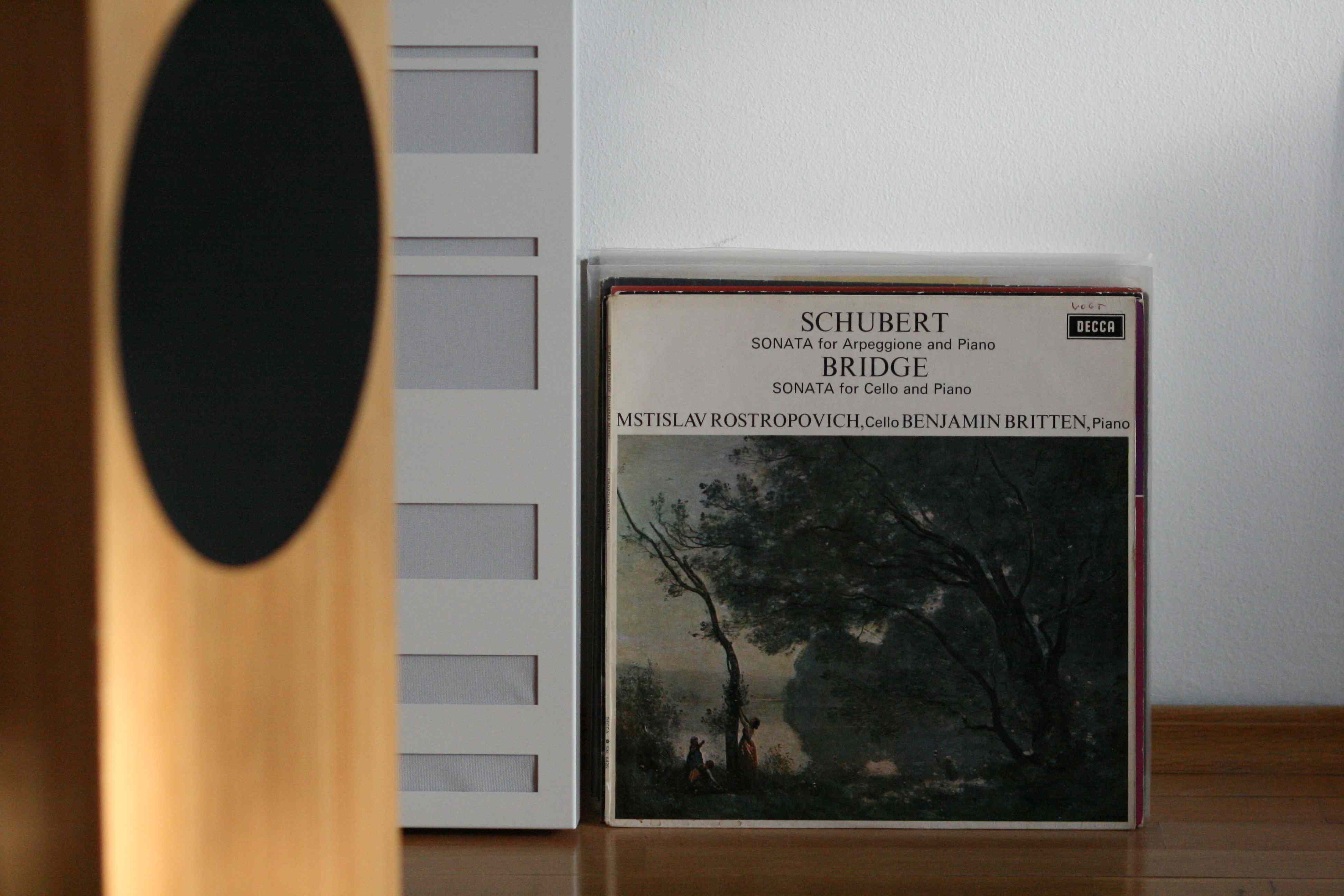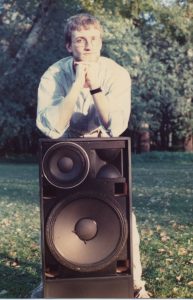
My HiFi Story
Music, and it’s reproduction
Hi. This is David Haigner. I intend to share my personal reflexion about music, measurement and observations, based on my own journey towards high fidelity music reproduction. I will not care about scientific precision here. Just fragments and experiences that formed my point of view. Today, I will start with my hifi story.
Childhood
Maybe it is the fault of my mother. Who played her Viola da Gamba daily in my childhood. Marin Marais or Bach, a Zen like meditative experience. Maybe not the right thing for a 3 year old? I am very happy to have received this treatment. Or my father, after I heard him playing our piano, sometimes with friends and four hands. Overwhelming sound. Warmth. Endless nuances of tone, timbre, percussiveness. Concerts and rehearsals of medieval music in medieval castles and halls, on medieval „Krummhörner“ and other exotic instruments.
I had to wait until about 5 years old to learn piano playing myself. Felt like infinity.
After that first decade came years of clarinet at the Mozarteum Salzburg. I liked the tone of my instrument. And years after, when bad weather forced us down from the mountains into the city of Bolzano, Italy, I called my girlfriend to join me and listen to Mozart’s clarinet concerto together. A record played somewhere in the neighbourhood. We did not move for 20 minutes. Irresistable.
At home, we sometimes listened to records on vinyl and tape on Philips wideband loudspeakers. My own first record was, of course, Tschaikovsky No.1 b-minor. Sounding awful compared to real instruments. No problem, with live music always around.
Student years – something is missing
When I moved to Vienna to study engineering a crisis came up. A lack of musical stimulus. I found an affordable piano, but already had decided that ABM, Gilels and Gould did much better. And the technical university needed attention. Besides, there was a room in the basement: I sometimes flooded it with wood particles after starting to build loudspeakers, early in the 80’s.
Every year I used a good part of my interrail ticket to travel Europe in search of better high fidelity systems, room tuning, room acoustics and loudspeaker literature, and jazz notations. My own hifi was based on wide-band and two-way speakers, driven by diverse electronics around. Careful setup helped to use room modes enhance the low end. A dear friend helped me to dive deeper into electronics, and we built some nice stuff together.

It took all my money to aquire LMS, a PC based loudspeaker measurement system, when it arrived in Europe. No internet in the 80s! I actually won a good audio friend sharing the cost of LEAP to optimize crossovers, which helped to faster advance my state of the art. Before, it was all done manually, student budget constricted: self built mic and generator, a scope and paper sheets helped to check frequency and phase response. Then, at the press of one button, the bode plot was there within a minute. And multiples of it, to check the forward radiation pattern. Wonderful!
Loudspeaker and room acoustic work
So called „first order“ crossovers and wide band loudspeakers have their limits. I had to build many multi-way loudspeakers until finding my own way to make them time-coherent. Only then the wide-bander and Quad ESL times were over.
Next station were horn systems, both for public address and hifi. At that time there were either „modern“ constant directivity horns with strong colorations or ancient stuff that sounded good but not quite up to date. Finally a few guys entered the scene with low power tube amplifiers. Wouldn’t my high sensitivity horn speakers be a fine match with 3 watts of SET power?
Wow. A whole new can of worms opened. Now the speakers had to meet many more conditions: high sensitivity, high and constant impedance – to make sure what differences we heard were caused by different amplifiers, not their damping factors. And of course I wanted them to reproduce proper square waves.
Based on prior work for the industry (measurement and control engineering), I built a CNC router to prototype a variety of horn shapes. Programmed spreadsheets and other stuff to design these shapes, as well as differential microphones to analyze diaphragm modes and wavefronts.
Fast forward 30 years
It was a long journey. I spent many wonderful evenings with friends and customers, job done, listening to music. Just a few days ago, at a friends place, we listened several hours comparing Tschaikovsky’s piano concerts interpreted by different artists. Back to my first LP.
Many amplifiers passed through my system, from Devialet and David Berning to Nelson Pass, EAR, Thomas Mayer and Kondo. Again, all inspired and helped by friends, distributors and customers.
I spent memorable days at ETF’s, and enjoyed perfect moments there: once, while listening with a group of very nice people to The Dub Side of the Moon, even enjoyed Whisky. Gladly I forgot which one, because all others yet tasted I didn’t like. Another one, when Christof Kraus and I started his open wire „Death machine“ tabletop tube amplifier and my on the fly crossover designed horn speaker with Dvorak’s violin concerto op. 53, second movement. Isabelle Faust, The Prague Philharmonia, Jiri Belohlavek. It was quite a siren song.
Recently, another friend persuaded me to help develop an app to measure sound quality of lower quality bluetooth audio systems. We had built a digitally controlled wireless mobile hifi system together, with the working title „High End Blaster“. Compared to that, he was shocked how much music was missing on replay via his, not too cheap, bluetooth loudspeaker. With the help of Florian, TestHiFi was programmed to most easily show the differences.
Again, a flashback: the loudspeaker in the picture above is a predecessor to modern bluetooth speakers: mono, wireless microphone input, and battery powered, on wheels.
Finally tube amplifiers drive my loudspeakers to reproduce acceptable string sound, at home. Which transports me back to childhood. Alone or with my dearest companions, we zoom in via the volume control, getting absorbed by the sound.